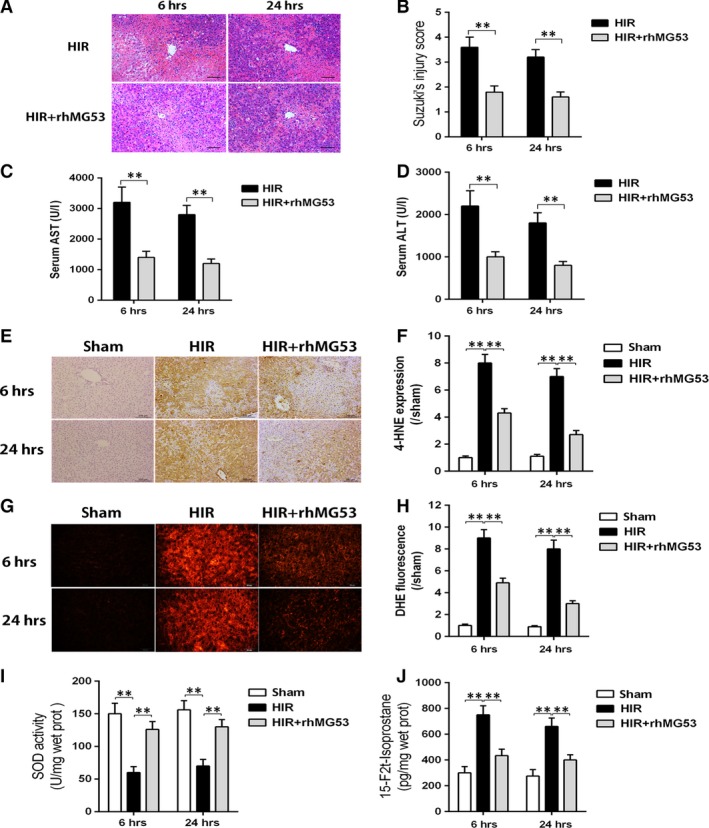Figure 2.

MG53 administration reduced hepatic injury and oxidative stress during ischaemia/reperfusion. Rats were subjected to HIR or sham operation with or without administration of rhMG53 via caudal vein and then samples were collected after liver reperfusion for 6 and 24 hrs. (A and B) Haematoxylin and eosin (H&E)‐stained sections of livers (×200) and Suzuki's scores; (C) serum aspartate aminotransferase (AST) level; (D) serum alanine aspartate aminotransferase (ALT) level; (E and F) reactive oxygen species (ROS) levels assessed using fluorescence microscopy following the changes in immunofluorescence staining (×200) of liver dihydroethidium (DHE) (red). (G and H) Immunohistochemical staining (×200) of liver 4‐hydroxynonenal (4‐HNE) and density analysis. (I) Liver antioxidant enzyme superoxide dismutase (SOD) activity; (J) liver oxidative stress marker 15‐F2t‐isoprostane level. Date are mean ± SEM, n = 8/group, **P < 0.01. HIR, hepatic ischaemia/reperfusion; rhMG53, recombinant human MG53 protein.
